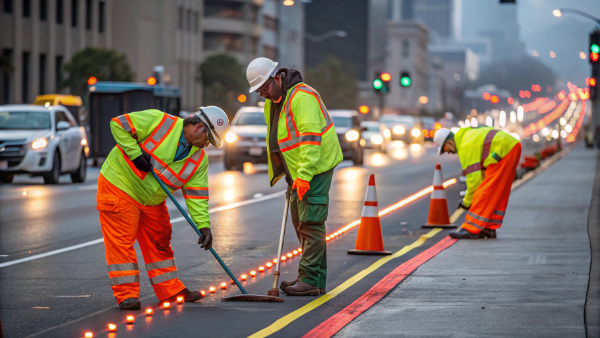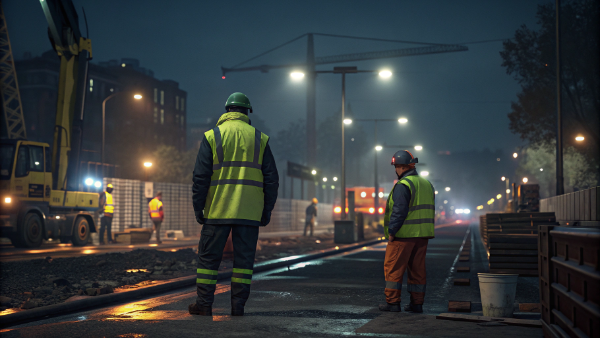Running in the rain feels impossible. You want to train, but getting soaked and cold is miserable. The right gear makes it easy to stay dry, comfortable, and safe.
The best gear for running in the rain includes a breathable, waterproof jacket with a hood, moisture-wicking tops and bottoms, and water-resistant running shoes. For safety in low light, always choose gear with high-visibility reflective elements to ensure you are seen by others.
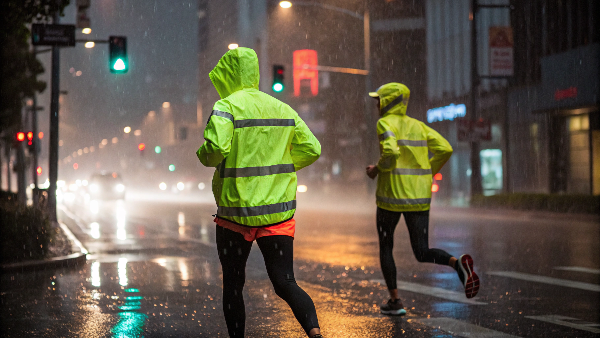
Getting the right gear is the difference between a great run and a terrible one. I learned this the hard way, but you don't have to. You just need to know what to look for and how to layer your clothing correctly. It’s simpler than you think, and once you have a system, you’ll never let a little rain stop you again. Let’s break down exactly what you need to keep running, no matter the weather.
What to wear if running in the rain?
The thought of a cold, wet run can stop you. It's uncomfortable and can even lead to chafing. A simple layering strategy is the answer to staying comfortable.
Wear a system of layers. Start with a synthetic, moisture-wicking base layer1 against your skin. Add a waterproof and breathable outer jacket2. For your lower body, wear running tights or shorts3 made from a material like polyester or spandex. Don't forget a hat.
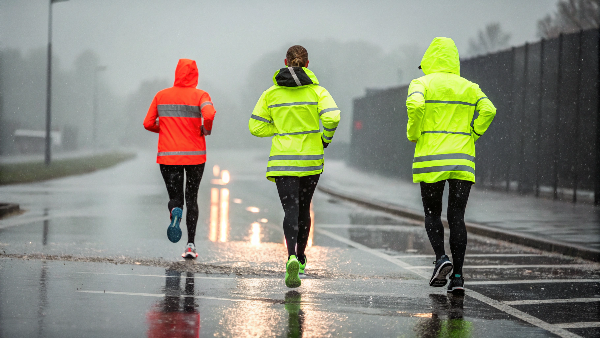
The key to comfort is managing moisture, both from the rain and from your own sweat. This is where a layering system really shines. I once made the mistake of wearing a cotton t-shirt under a rain jacket. I stayed dry from the rain, but I was soaked in sweat and got cold fast. That taught me a valuable lesson: your base layer is just as important as your jacket. Think of your outfit in two or three parts. Each part has a specific job to do. When they work together, you stay perfectly comfortable.
Here is a breakdown of the layering system:
| Layer | Purpose | Recommended Material |
|---|---|---|
| Base Layer | Wicks sweat away from your skin to keep you dry from the inside. | Polyester, Merino Wool, Spandex Blends |
| Mid Layer (Optional) | Provides insulation on cold, rainy days. Traps body heat. | Fleece, Thermal Grids |
| Outer Layer | Blocks wind and rain while letting sweat vapor escape. | Waterproof/Breathable Fabrics (e.g., PU-coated) |
What is the best reflective jacket for running in the rain?
Running in the rain often means poor visibility. Drivers can't see you easily, which is dangerous. A good reflective jacket4 makes you stand out and keeps you safe.
The best reflective jacket for running in the rain is waterproof, breathable, and lightweight. It must have 360-degree reflectivity5 using certified materials that meet safety standards like ANSI/ISEA 107. This ensures you are visible to traffic from all angles in low-light conditions.
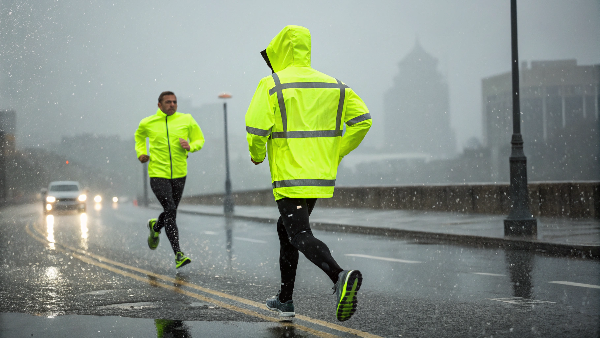
When we manufacture jackets at Vissafety, we focus on what I call the "runner's essentials". It’s not just about slapping some reflective tape on a jacket. The placement matters. The quality of the material matters. A truly great jacket keeps you dry without making you feel like you’re running in a plastic bag. It should have vents to let out heat, a hood that stays put, and reflective elements on the front, back, and sides. A client of mine, Danny, sources gear for road crews, and he always stresses the need for compliance and 360-degree visibility. The same principle applies to runners. Your safety depends on being seen from every possible angle.
A top-tier jacket has several key features:
| Feature | What to Look For | Why It Matters |
|---|---|---|
| Waterproofing | Sealed or taped seams, high waterproof rating. | Prevents rain from leaking through the stitching. |
| Breathability | Vents (e.g., underarm zips), breathable fabric. | Allows sweat and heat to escape so you don't overheat. |
| Reflectivity | Reflective details on chest, back, and arms. | Ensures you are visible to others from all directions. |
| Fit & Comfort | Lightweight material, adjustable hood and cuffs. | Moves with your body and doesn't feel bulky or restrictive. |
How to go for a run in the rain?
The biggest challenge is often just getting out the door. The weather looks bad, and your motivation drops. But with a simple routine, you can make it happen easily.
To run in the rain, first dress in proper waterproof and wicking layers6. Warm up indoors before you go out. Adjust your pace, shorten your stride to prevent slipping, and be extra aware of your surroundings. Have dry clothes7 ready for when you return.
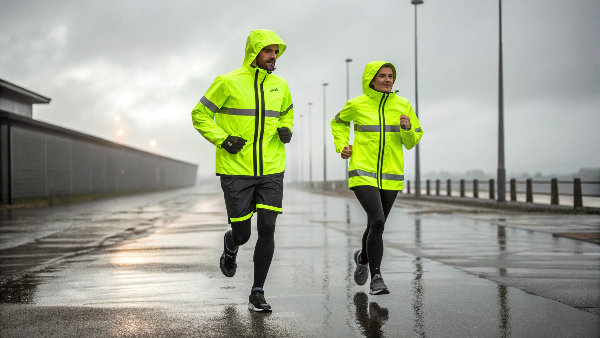
A little preparation makes all the difference. I keep a "rainy day kit8" ready to go, so I don't have to think about it. It includes my jacket, a hat, and my older pair of running shoes that I don't mind getting soaked. The most important part of the process is what you do when you get back. You need to get out of your wet clothes immediately. Staying in damp gear is a quick way to get chilled. I always have a towel and dry clothes waiting by the door. This simple post-run plan makes the whole experience much more pleasant. It turns a rainy run from a chore into a refreshing challenge.
Here is a simple plan to follow:
- Gear Up Correctly: Put on your layers. Start with a wicking base layer, then your reflective, waterproof jacket. A brimmed hat is great for keeping rain out of your eyes.
- Protect Electronics: Put your phone or any music player in a waterproof case or a simple plastic bag.
- Run Smart: Be aware that surfaces are slippery. Slow your pace and shorten your steps to stay stable. Watch out for puddles.
- Dry Off Fast: As soon as you finish, change into dry clothes. Stuff your wet shoes with newspaper to help them dry faster and keep their shape.
What is the best running reflective rain jacket?
You see many jackets labeled "waterproof". But for running, you need more. A cheap jacket will trap sweat, making you wet from the inside. The best ones have advanced technical features.
The best running reflective rain jacket has a high waterproof rating (over 10,000mm) and an equally high breathability rating (over 10,000g/m²/24h). It features fully taped seams, lightweight fabric, and certified reflective materials like those meeting ANSI/ISEA 107 standards for maximum visibility.

Understanding the technical specs helps you choose a jacket that actually works. Think of it like this: waterproofing keeps rain out, and breathability lets your sweat out. You need both to be high-performing. At my company, we obsess over these numbers because they are the true measure of quality. A jacket with a low breathability rating is fine for a walk, but not for a run where you are generating a lot of heat and sweat. Investing in a jacket with the right technical specs is investing in your comfort and safety on the road. It makes a huge difference in how you feel during and after your run.
Here is what the technical terms mean:
| Feature | What It Means | Why It Matters for Runners |
|---|---|---|
| Waterproof Rating (mm) | The amount of water pressure the fabric can withstand before leaking. | A higher number (e.g., 10,000mm+) means better protection in heavy rain. |
| Breathability Rating (g/m²/24h) | How much water vapor can pass through the fabric in 24 hours. | A higher number (e.g., 10,000g+) means sweat escapes faster, keeping you dry. |
| Seam Sealing | A waterproof tape applied over the seams. | Stitches create tiny holes. Taping them prevents any leaks. |
| Reflective Standard | Certification for reflectivity performance (e.g., ANSI/ISEA 107). | Guarantees the material is bright enough to be seen from a safe distance. |
What is the best thing to wear in the rain?
Rain can ruin any outdoor plan, not just running. The problem is always the same: getting wet and cold. The solution is also the same: choosing the right materials.
The best thing to wear in the rain is a layered outfit made of the right materials. Avoid cotton completely. Instead, use a synthetic base layer, an optional fleece mid-layer for warmth, and a waterproof, breathable outer jacket to block the elements.

The "no cotton" rule is the most important one to remember. Cotton is a great fabric when it's dry, but it acts like a sponge when it gets wet, either from rain or sweat. It holds onto that moisture, pulls heat away from your body, and makes you feel cold and heavy. This is true whether you are running, hiking, or working outside. At Vissafety, we apply this same material science to our high-visibility workwear. Workers need to stay dry and comfortable to do their jobs safely, just like runners. Choosing performance fabrics over casual ones like cotton is the single biggest step you can take to enjoy your time outdoors in the rain.
Here is a simple guide to choosing the right materials for each layer:
| Layer | Good Material | Bad Material | Why? |
|---|---|---|---|
| Base Layer | Polyester, Merino Wool | Cotton | Wicks moisture away from your skin to keep you dry. |
| Mid Layer | Fleece, Down | Heavy Wool | Provides excellent warmth without being heavy or bulky. |
| Outer Layer | Coated Nylon/Polyester | Untreated Fabric | Blocks wind and rain completely while letting sweat out. |
Conclusion
Dressing for a run in the rain is simple. Use moisture-wicking layers and top it with a breathable, reflective, waterproof jacket. This will keep you safe, dry, and comfortable.
-
Understanding moisture-wicking materials can enhance your running experience, keeping you dry and comfortable during wet conditions. ↩
-
Explore top-rated jackets that combine waterproofing with breathability, ensuring comfort during your rainy runs. ↩
-
Discover the best materials for running bottoms that keep you comfortable and dry, even in wet conditions. ↩
-
Explore this link to discover top-rated reflective jackets that enhance visibility and safety while running in wet conditions. ↩
-
Learn about the significance of 360-degree reflectivity in running jackets to ensure maximum visibility and safety during low-light conditions ↩
-
Explore this link to discover top-rated waterproof and wicking layers that will keep you dry and comfortable during your rainy runs. ↩
-
Understanding the importance of changing into dry clothes can help you avoid discomfort and health issues after a rainy run. ↩
-
Check out this resource to learn essential items for your rainy day kit, ensuring you're always prepared for wet weather runs. ↩

